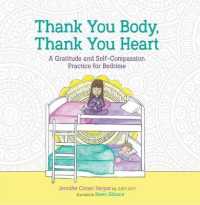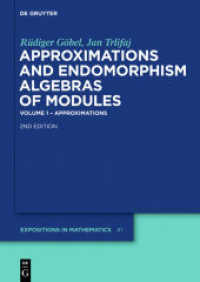Full Description
Providing a comprehensive and contemporary understanding of the phenomenon of cuckooing, this volume is a timely insight into this longstanding practice whereby individuals or groups take over a person's home and use the property to facilitate exploitation.
Adopting a variety of methodological approaches and empirical data, this collection brings together the existing research base on cuckooing activity that occurs both within and beyond County Lines drug distribution. Drawing attention to the array of cuckooing scenarios that do not involve County Lines operatives, as well as those that do, the book reclaims a space for habitually overlooked victims. The circumstances and structures that facilitate home takeovers are also discussed, alongside recommendations for prevention and intervention initiatives.
Bringing together contributions by researchers from a variety of disciplines, Understanding and Preventing 'Cuckooing' Victimisation is an essential read for scholars and students in the fields of criminology, criminal justice, social policy, social work, housing, health, and education. It is also a valuable resource for professionals and practitioners involved in policy design, adult safeguarding, and crime control.
Contents
Introductory Note; 1. Introduction: Cuckooing in Context; 2. County Lines and Exploitation in Drug Markets: Historical and Current Developments; 3. Communities of Practice in Multi Agency Responses to Cuckooing; 4. Adult Grooming, Exploitation, and Home Takeovers; 5. Women's Experiences of County Lines-related Cuckooing in North Yorkshire; 6. Reclaiming Cuckooing: Beyond County Lines; 7. From Isolation to Invasion: Disability and Loneliness as Catalysts for Cuckooing; 8. Disability and Vulnerability; 9. Housing and Cuckooing: The Role of Tenure in Framing Structural Vulnerability; 10. Care Leavers and Cuckooing: Highlighting the Need to Belong; 11. Concluding Thoughts








